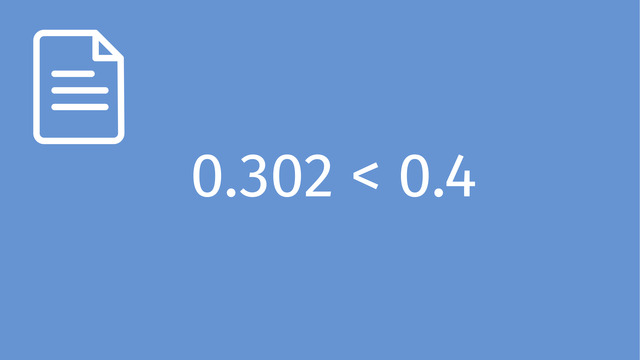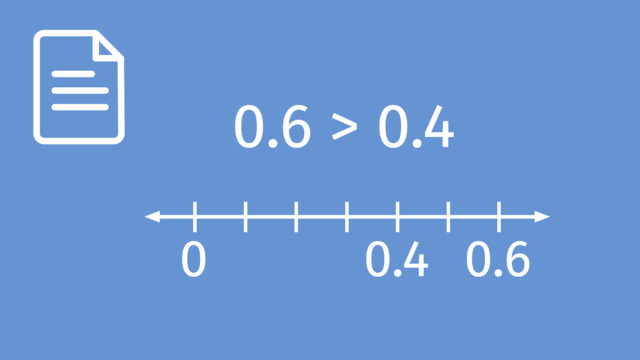Comparing Decimals on a Number Line
- Comparing Decimals on a Number Line – Introduction
- Understanding Decimal Numbers – Definition
- Comparing Decimals on a Number Line – Example
- Comparing Decimals on a Number Line – Guided Practice
- Comparing Decimals on a Number Line – Practice
- Comparing Decimals on a Number Line – Summary
- Comparing Decimals on a Number Line – Frequently Asked Questions
Learning text on the topic Comparing Decimals on a Number Line
Comparing Decimals on a Number Line – Introduction
In mathematics, especially when dealing with numbers less than one, decimals play a crucial role. The ability to compare decimals is not only a fundamental maths skill but also a practical one used in everyday life, such as in financial literacy and measurements. Doing so on the number line allows students to visualise the distances between different decimals with ease.
Understanding Decimal Numbers – Definition
Decimal numbers are a representation of numbers that include a whole number and a fractional part, separated by a decimal point.
The fraction part can extend to tenths, hundredths, thousandths, and beyond. For instance, in the decimal number 0.256, '0' is the whole number part, and '256' is the fractional part indicating 256 thousandths.
Decimals help us to write numbers that are not whole and represent fractions in a way that is easy to understand and use, especially when dealing with measurement, money, or data that requires precision.
Comparing Decimals on a Number Line – Example
Visualising Decimal Comparison
Visual tools like number lines can be invaluable for students learning to compare decimals. You may also use a place value chart to help you understand the fractional part in decimals initially too. Let's take the example of comparing 0.67 and 0.7. When placing these numbers on a number line, it's evident that 0.7 is further to the right than 0.67, indicating it is the greater number.
Illu1 : Illustration Request: A number line that shows various decimals, including 0.67 and 0.7, to visualize the comparison.
Steps to Compare Decimals
- Start by comparing the whole number parts. If they are different, the number with the larger whole number is greater.
- If the whole numbers are the same, compare the next digit to the right (tenths, hundredths, etc.).
- Place the decimals on a number line if visual comparison aids understanding.
Comparing Decimals on a Number Line – Guided Practice
Using our number line:
- Notice that the whole numbers are the same, so we look at the tenth’s place. They are both 4, so we move to the next digit.
- In the hundredths place, one number has a 5 and one has a 6. Since 6 is greater than 5, 0.465 is greater than 0.458.
Comparing Decimals on a Number Line – Practice
Practising comparing decimals on a number line.
Comparing Decimals on a Number Line – Summary
Key Learnings from this Text:
- Decimals represent numbers that include both a whole number and a fractional part.
- Comparing decimals involves looking at the digits from left to right and using place value.
- A number line is an effective visual tool for comparing the size of decimal numbers.
- Decimals are extensively used in real-life contexts such as money and measurements.
Explore other content on our website platform for interactive practice problems, videos, and printable worksheets to further your understanding of decimals and other math concepts.
Comparing Decimals on a Number Line – Frequently Asked Questions
Comparing Decimals on a Number Line exercise
-
What is a decimal number?
HintsThink about a number that has a part before and after a dot (for example, 3.14).
The dot in a decimal number is called a decimal point, which separates the whole number from the fractional part.
SolutionA decimal number is a representation of numbers that include a whole number and a fractional part, separated by a decimal point.
The fractional part can extend to tenths, hundredths, thousandths and beyond.
-
Which of the following numbers is greater: 2.27 or 2.7?
HintsIf the digits in the ones place are the same, look at the digits in the tenths place.
Look at the digits to the right of the decimal point to compare which is bigger.
Solution2.7 > 2.27.
Compare the whole number parts: Both numbers have the same whole number part, which is 2.
Compare the tenths place: In 2.27, the digit in the tenths place is 2. In 2.7, the digit in the tenths place is 7.
Since 7 > 2, 2.7 > 2.27.
-
Compare the decimals and place them on the number line.
HintsStart by comparing the digits in the tenths place if the ones place digits are the same.
Compare the tenths digits, 1 in 4.143, 4 in 4.458 and 7 in 4.765.
SolutionHere we can see the numbers placed correctly on the number line.
Compare the ones place: All numbers have the same ones place, which is 4.
Compare the tenths place: In 4.143, the digit in the tenths place is 1, in 4.458, the digit in the tenths place is 4 and in 4.765, the digit in the tenths place is 7.
Since 7 > 4 > 1, 4.765 > 4.458 > 4.143.
-
Place the decimals in order from smallest to largest on the number line.
HintsCompare the digits from left to right, starting with the ones place.
If the digits in one place value are the same, move to the next place value to determine the order.
You could add a 0 to the end of 5.82 and 5.89 so they all have three digits after the decimal point to help with comparing.
SolutionThe correct order is: 5.801, 5.82, 5.89.
Steps:
1. Compare ones place: All numbers start with 5, so they're the same.
2. Compare tenths place:
5.82 has an 8
5.801 has an 8
5.89 has an 8
3. Compare hundredths place:
5.82 has a 2
5.801 has a 0
5.89 has a 9
So, 0 is smallest, 2 is in the middle and 9 is the largest.
You can stop comparing after step 3.
-
You are comparing the lengths of two ribbons.
HintsCompare the digits in the ones place first.
If they are the same, then compare the digits in the tenths place.
Look at the tenths place: compare 4 in 2.45 and 5 in 2.54.
Which one is greater?
SolutionThe ribbon that is 2.54 metres long is longer.
-
Which fruit is the heaviest?
HintsStart by comparing the digits in the ones place, then move to the tenths, hundredths and thousandths places step by step.
If the digits are the same, move to the next place value to determine the larger number.
If you compare the digits in the hundredths place, you will see that two pieces of fruit are heavier than the other two.
Once you have found the two heaviest pieces of fruit, compare the digits in the thousandths place.
SolutionThe banana is the heaviest, with a weight of 0.176 kg.
Compare the tenths place:
- All pieces of fruit have the same tenths digit (1), so move to the next digit.
- Compare the hundredths place:
Banana: 7
Kiwi: 6
Orange: 6
The banana and apple both have 7, but we need to check the next digit for both to be sure.
- Compare the thousandths place for banana and apple:
Apple: 2
The banana has the larger thousandths digit (6 > 2).
 Do you want to learn faster and more easily?
Do you want to learn faster and more easily?















